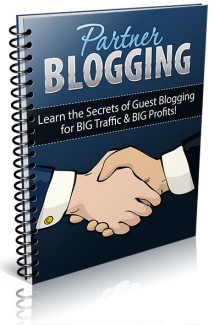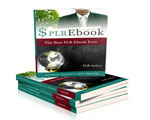 License Type: Private Label Rights
License Type: Private Label Rights  File Size: 798 KB
File Size: 798 KB File Type: ZIP
File Type: ZIP
 SKU: 51596
SKU: 51596  Shipping: Online Download
Shipping: Online Download
Ebook Sample Content Preview:
Writing a Quality Article
Don’t be tempted to pump out a quick and dirty article when you’re guest blogging. Every article you write needs to be the highest quality you can possibly achieve, because each and every article represents you. Not only does the article represent you to the owner of the blog you’re writing for, but also to everyone who reads it. Remember, your name will be attached to the article!
How many people do you think will click the link to visit your blog, website, squeeze page or other page you link to if your article isn’t interesting?
The main point of guest blogging is to get you more traffic, and also to establish your name in your niche. You can’t accomplish either of those if your content isn’t of the highest quality so above all else: make SURE that the article reads well, is relevant, free from grammatical errors and is interesting and entertaining.
Step One: Research
At this point, you should have already done research to see what type of material the blog’s visitors enjoy as well as to find a great topic. Now it’s time to research content.
Unless you already know your topic inside and out, it’s a good idea to do some thorough research in order to be certain you’re providing accurate and relevant information. I probably don’t have to tell you this, but never, ever plagiarize another person’s work! Remember, plagiarism includes ideas as well as actual words, so don’t make your work too close to your research material, and use multiple sources of research for a single article.
Another thing to keep in mind is that you should be certain to use only reputable sources for your research. Sites like Wikipedia are not considered reputable because anyone can add information, even if he or she isn’t an expert in the subject.
Try to get your information from true, recognized experts in the field. Look for people who have books published through traditional publishers (not self-published) and from major websites in the field.
Step Two: Outline & Notes
As you perform your research, create a simple outline you can use for your article. Figure out approximately how many paragraphs you’d like your article to be and create a paragraph-by-paragraph outline that includes a few notes about what you’d like to say in each paragraph.
An outline will come in very handy as you write, because it will help prevent writer’s block. If you know what you’re going to say before you start writing, it will make your job go much faster.
Step Three: Writing
The actual writing process will be quite simple if you’ve done your outline and your notes. Make sure your article is in-depth with quality, useful information and is of sufficient length.
Remember, a 300-word article isn’t enough for most search engines these days. Google especially wants to see longer articles. Shoot for around 600 words.
Step Four: Editing & Proofreading
Do not skip the fourth and final step! Too many people think they can simply write an article and send it off for publication, but that simply isn’t true. Sure, you could do that, but then you risk looking foolish if you make a major mistake, or at least not getting asked to guest blog again.
One thing that really helps is to print your article and read it offline. Sometimes it’s easier to catch mistakes in printed material than on a computer screen.
Also, try reading one sentence at a time, or reading sentences backwards. This helps prevent you from scanning and missing items.
Getting the Most from the Article
Okay, so you’ve written (or outsourced) a high quality article and you’ve pinpointed a handful of authority blogs in which to submit your content to.
The next step is to make sure that your article is optimized so that you are able to get the most out of every submission as possible.
Some of the ways to use this traffic include:
1. Link to your blog or website where another article is featured.
2. Link to a squeeze page to collect opt-in subscribers and build a list.
3. Link directly to an affiliate link (This is not generally recommended, because most blog owners won’t allow it. However, some may if you really want to do this.)
4. Increase your authority within the niche with links to additional tools or resources on your website.
5. Promote a book, DVD or other media.
6. Build exposure by linking to your social media accounts (Facebook, twitter, etc.) or by linking to a Facebook page or group encouraging participation.
Here are a few other ways in which you can optimize your content itself in order to generate mass exposure:
1. Create an Info Graphic and post it to Pinterest. Link to the article from the pinned image.
2. Link to a webpage on your site that features exclusive offers, discounts or coupons for products and services that reader’s will be interested in.
3. Offer incentives such as contests and prizes for direct activity (tweet, Facebook like, re-pin content, etc.) on your website and link to it in the article footnote or author box.
Answer Comments
Don’t forget to be an active participant in the comments on your article. This will not only help you get more traffic from your article, but it will also be beneficial for the blog owner.
If he sees an active discussion on your article, he’ll be more likely to ask that you guest blog again. Plus, it’s a great way to get your name out there and to connect with prospects!








